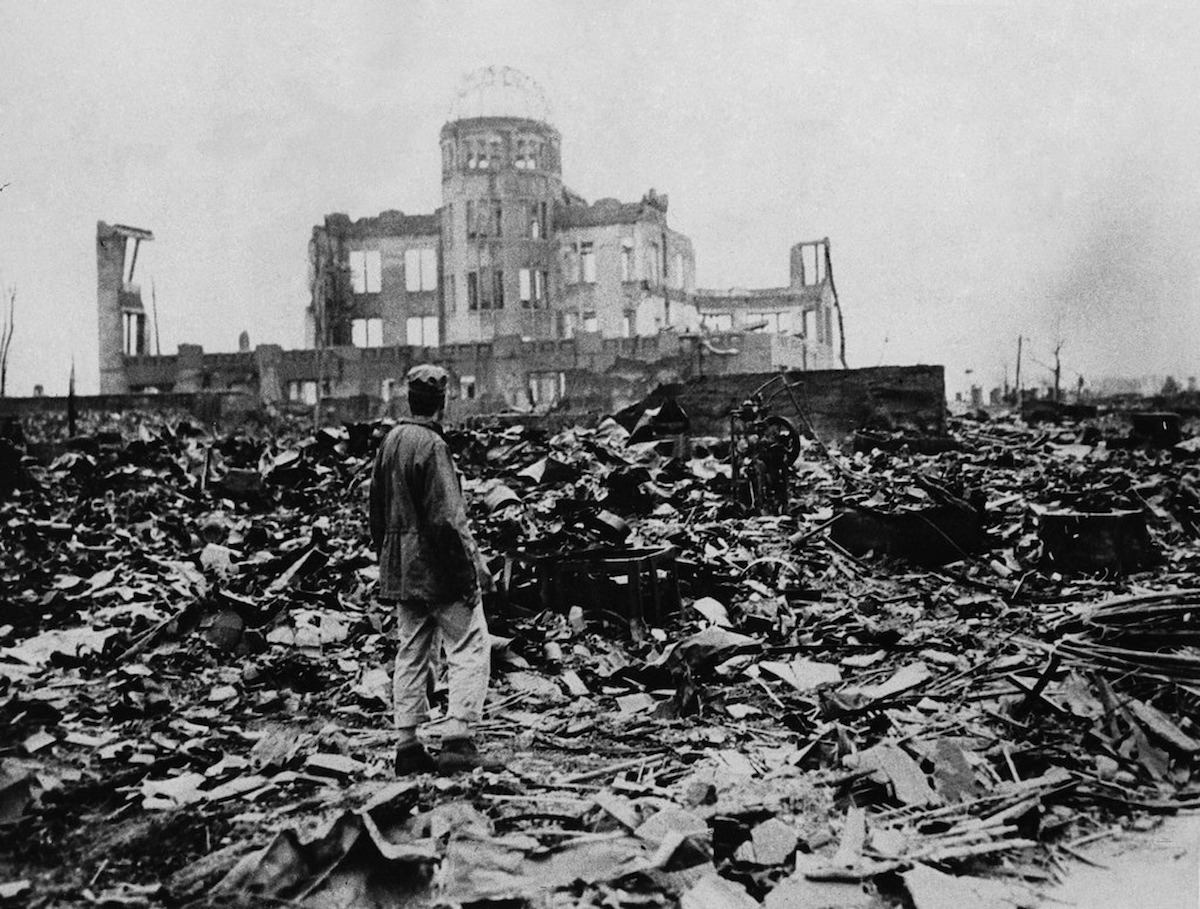- cross-posted to:
- workingclasscalendar@lemmy.world
stahmaxffcqankienulh.supabase.co
- cross-posted to:
- workingclasscalendar@lemmy.world
U.S. Nukes Hiroshima (1945)
Mon Aug 06, 1945
Image (NSFW):

Image: A lone man looking at a huge expanse of ruins left by the explosion of the atomic bomb on August 6th, 1945, in Hiroshima [buzzfeednews.com]
On this day in 1945, the U.S. military dropped a nuclear bomb on Hiroshima, instantly killing at least 80,000 people - mostly civilians - and tens of thousands more over the following weeks. The U.S. censored images of the bombing until 1952.
Eye-witness accounts of the bombing’s aftermath depicted a kind of apocalyptic horror: Father Wilhelm Kleinsorge, a German Jesuit priest, encountered a group of soldiers whose “faces were wholly burned, their eye-sockets were hollow, the fluid from their melted eyes had run down their cheeks… Their mouths were mere swollen, pus-covered wounds, which they could not bear to stretch enough to admit the spout of the teapot.”
Dr. Michihiko Hachiya, a survivor, spoke of “streetcars were standing and inside were dozens of bodies, blackened beyond recognition. I saw fire reservoirs filled to the brim with dead bodies who looked as they had been boiled alive”.
President Harry Truman made the case to the public that the bombings of Hiroshima and Nagasaki as a necessary and humanitarian means of forcing Japan’s surrender. This view was not held, however, by military commanders or leftist American dissidents.
Once American forces had Japan under military control, they imposed censorship on many images related to the U.S. bombing campaign. Among the images banned was a picture of a partially incinerated Nagasaki child, taken by Japanese photographer Yōsuke Yamahata. These restrictions were not lifted until 1952.
Among the first Americans to denounce the bombing were socialists such as the Trotskyist James P. Cannon, who publicly denounced the use of nuclear weapons as “an unspeakable atrocity”.
The dissent of military commanders was not public, however. In 1950, Admiral William Leahy, Truman’s chief of staff, wrote: “The use of this barbarous weapon at Hiroshima and Nagasaki was of no material assistance in our war against Japan”. In his memoirs, President Eisenhower, then General of the Army, confessed that “dropping the bomb was completely unnecessary”.
- Date: 1945-08-06
- Learn More: www.wsws.org, en.wikipedia.org, www.dukeeastasianexus.com.
- Tags: #Terrorism.
- Source: www.apeoplescalendar.org


Do you… think we bombed *only CEO’s and billionaires…? Most of the dead were civilians.
edit: clarification
I don’t know who is ‘we’ here but anyway.
Yes I do in fact. Atomic bomb doesn’t care about your social status, it kills anyone in radius. Doesn’t matter if you’re a worker or a CEO, you’re dead. The bombing wasn’t even motivated by that at all, it wasn’t like “bwahaha let’s kill poor people! But let’s spare rich and CEOs”. It had nothing to do with that. In fact, if there would be a city of billionaires and CEOs, it’d make more sense to bomb them and cause chaos in the companies they own.
As I said I guess you can stretch it that many workers died and that’s true but as the other comment said, the context is what’s important here
“We” is my country, the US.
I added clarification. The point wasn’t the socioeconomic status of the people who died, it’s the fact that we used devastating nuclear weapons on 2 cities and the majority of casualties were civilians. That’s it.
Damn these military CEOs and billionaires